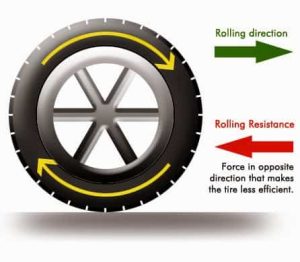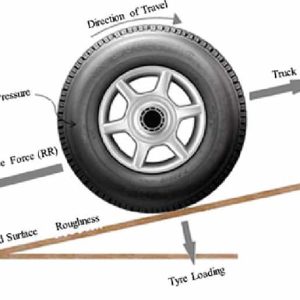Tires For Your Truck | Rolling Resistance vs Comfort & MPGs
Tires for your truck have come a long way.
 It seems as if everything you do get the greatest productivity from your truck is some kind of trade-off, so every decision becomes a balancing act. When it comes to tires, owner-operators and fleet managers have traditionally had to choose between ride and mileage. Thankfully, you can now look forward to both, if you spec the proper tires for your truck.
It seems as if everything you do get the greatest productivity from your truck is some kind of trade-off, so every decision becomes a balancing act. When it comes to tires, owner-operators and fleet managers have traditionally had to choose between ride and mileage. Thankfully, you can now look forward to both, if you spec the proper tires for your truck.
Tire manufacturers have worked diligently to come up with new rubber compounds and other technologies to improve tire performance in multiple respects. Today’s tires last longer along with giving you better fuel economy and a smoother ride.
Why? Lower rolling resistance.
Here’s the trade-off tire OEMs have been grappling with (and you’ve been paying for, one way or another):
You know your truck will slow down on its own if you let it coast. That’s due to rolling resistance, which is caused by hysteresis – a property of any deformable material. Where your tire touches the pavement, the truck’s weight makes it flatten out slightly. As the tire rolls down the road, the process of deformation and recovery is continuous. That friction causes a loss of energy in the form of heat, which warms your tires but is mostly dissipated. Hysteresis is that energy loss.
Compared to rubber tires, steel wheels will roll farther because their smooth, hard surface does not deform and therefore creates less rolling resistance.
Why does rolling resistance matter?
 Your engine burns fuel, transferring that energy to your axles to drive your tires. The more rolling resistance your tires have, the harder your engine has to work, burning more fuel. When you magnify that by 18 wheels, it’s easy to see how a tiny change can turn into a noticeable drop in fuel efficiency.
Your engine burns fuel, transferring that energy to your axles to drive your tires. The more rolling resistance your tires have, the harder your engine has to work, burning more fuel. When you magnify that by 18 wheels, it’s easy to see how a tiny change can turn into a noticeable drop in fuel efficiency.
Hysteresis can waste as much as 30% of the energy your engine sends to the tires. This is also why it’s so important to maintain proper tire inflation – even a pound or two makes your tires “squishier,” increasing their rolling resistance and using up even more fuel.
Then there’s the ride issue. The softer the tire compound, the more comfortable the ride. But you also get more deformation and, therefore, greater rolling resistance. You can get better mileage with firmer rubber compound, but you’ll pay for it in your seat. So the traditional trade-off has always been pain in the wallet vs. pain in the butt.
Weighing in on the side of your wallet has also been the temptation to purchase cheaper tires. But that can cost you more in the long run, through using more fuel and shorter tire life. Since every truck owner now knows total cost of ownership is the only financial measurement that makes sense, you need to consider overall tire performance.
The perfect tire may not yet have hit the market, but fortunately it is no longer necessary to sacrifice comfort for better fuel economy, or sacrifice your fuel budget for a decent day behind the wheel. Every tire has a rolling resistance rating, so talk to your dealer about how to choose the best tires for your truck.
